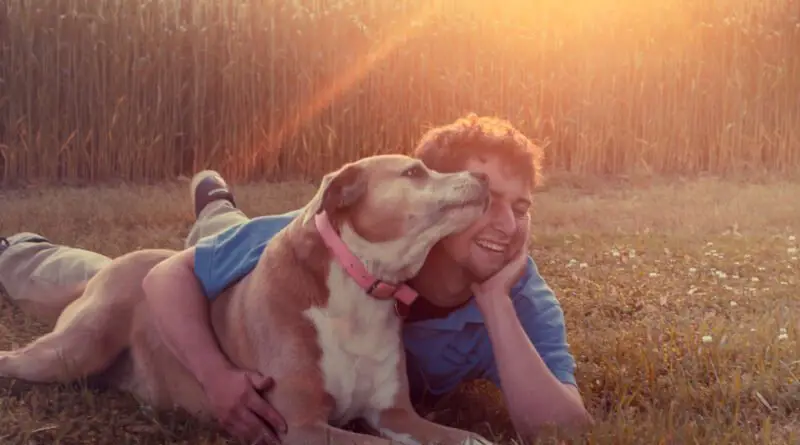Last modified on December 5th, 2023 at 1:06 pm
5 Common Health Issues in Senior Dogs and How to Manage Them
Pet ownership comes with responsibilities. While dogs can be fantastic companions, they depend on you for food and health care. However, the unconditional love and the joy they bring to families outweigh the responsibility.
Like most living things, your furry friend also grows older daily. They become more susceptible to illness and disease.
Some owners find it difficult to admit their once playful ball-chasing puppy is getting old and might ignore the most common health issues in senior dogs.
While some injuries cannot be prevented in old dogs, there are ways to manage them to ensure optimal comfort and long life for your pet.
This article will discuss the common health issues that senior dog owners should watch out for and tips to manage them.
When is a dog considered senior?
Dogs typically live for 10–13 years, but the lifespan varies depending on breed and size. Most breeds will be considered a senior once they clock seven years old.
Very large breeds age more rapidly than small breeds. Genetics, environmental conditions, and care can also affect the dog’s age.
One sure way to be certain your dog can be considered a senior is when they starts showing signs of age-related health issues.
Common health issues in old dogs
Senior dogs are not as active as their younger counterpart, and they might also exhibit certain behaviors that could appear abnormal. However, it is vital to distinguish between regular age-related behavioral changes and urgent medical treatment.
Joint injuries and diseases
Joint injuries and diseases can cause pain for your dogs. They are very easy to miss. Dogs suffering from these injuries and illnesses might be considered slow due to old age while they suffer in silence.
- CCL rupture
The Cranial Crucial Ligament (CCL) rupture or tear is a traumatic injury for any dog. It is usually caused by ligament degeneration, obesity, and poor physical condition. Some breeds are also more prone to this injury than others. TPLO surgery is one of the best treatments for this injury in dogs of all ages. - Osteoarthritis
Osteoarthritis, or simply arthritis, is a common condition in older dogs that causes inflammation and joint pain.
It can make it difficult for dogs to move around and play. Common signs of arthritis in dogs are limping, reluctance to go up or down stairs, changes in how they walk, pain when walking, and difficulty getting up.
Weight management and regular exercise can help treat and prevent osteoarthritis. - Sprains and strains
Sprains and strains are soft tissue injuries. They do not affect any bones. A sprain is damage to the ligament that connects two bones, while a strain is damage to the muscle or tendon. Older and overweight dogs are prone to these injuries.
Dental diseases
Dental disease is a common problem in dogs of all ages but can be especially severe in older dogs. Dental disease can cause pain, tooth loss, and infection.
Gum disease is one of the most common dental diseases in senior dogs. It is caused by bacteria turning into plaque on the teeth, which could inflate the gums.
This disease needs to be treated as soon as possible because it could spread into your pet’s bloodstream.
Other common dental disorders in senior dogs include:
- Gingivitis
- Periodontitis
- Tooth root abscess
Regular brushing of your dog’s teeth can help prevent most oral diseases.
Heart disease
Heart disease is another common condition in older dogs. It can cause various symptoms, including coughing, shortness of breath, and exercise intolerance. Hypertension or high blood pressure is a common heart disease in older dogs.
Hypertension is when a dog’s arterial blood pressure is too high. This can be caused by another disease or occur on its own. Symptoms include seizures, circling, disorientation, lethargy, nosebleeds, weakness, dilated pupils, and blood or protein in the urine.
Although there is no sure way to prevent heart disease in your dogs, healthy feeding can help reduce the risk.
Eye injuries
Fighting, infection, or accidents with chemicals or other harmful substances may cause eye injuries. Some dog breeds are also more likely to have eye problems.
Many older dogs lose their eyesight, but most adapt well, even with poor vision or blindness. If you catch this early, you can teach your dog to rely on other senses to do everyday tasks. Cataracts are early signs of blindness.
Cognitive Dysfunction Syndrome (CDS)
CDS is a condition that affects the brain and can cause changes in behavior and memory. Older dogs with CDS may become forgetful, disoriented, or anxious.
The condition may be underdiagnosed because the behavioral changes happen slowly, and owners may think they are a normal part of aging.




